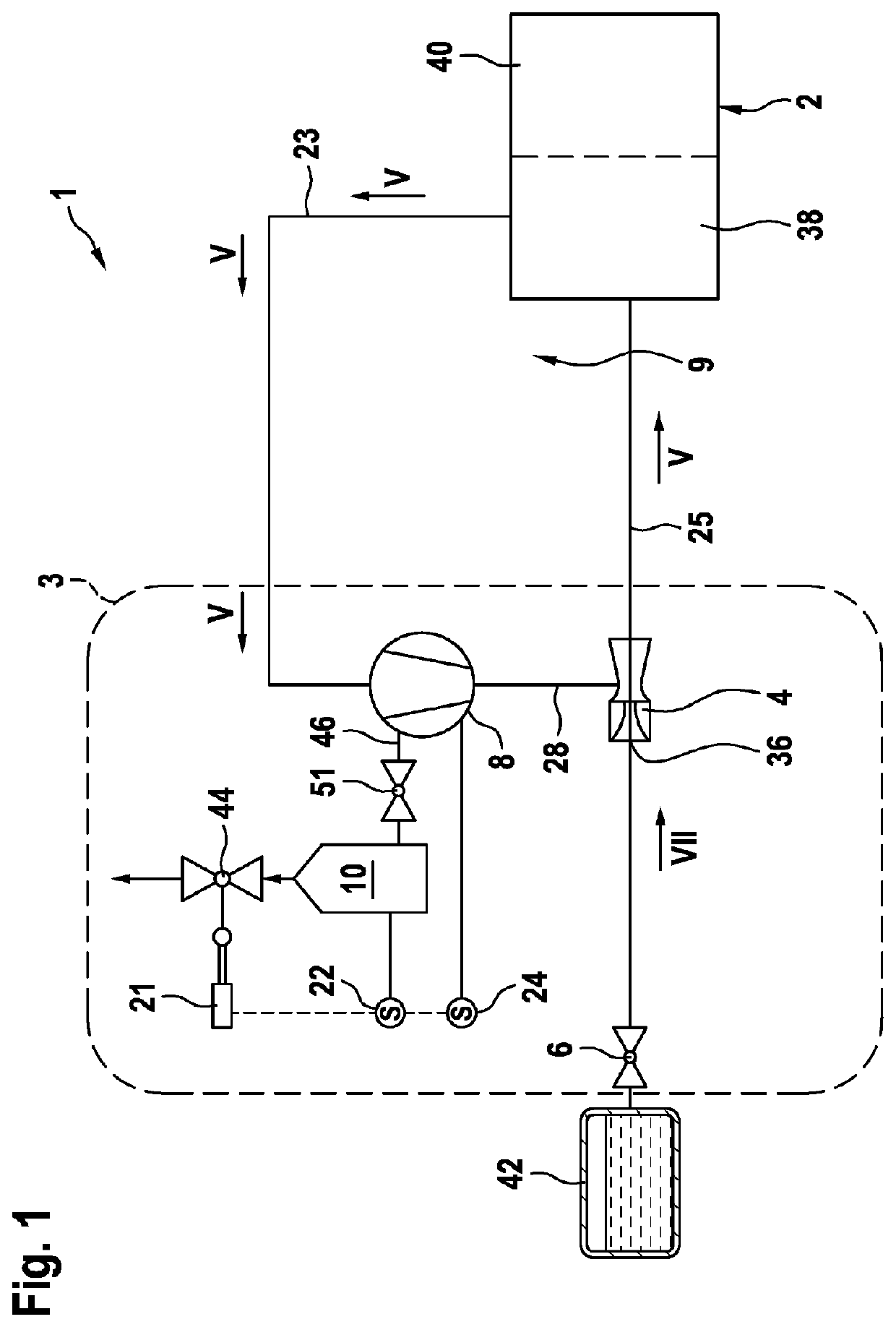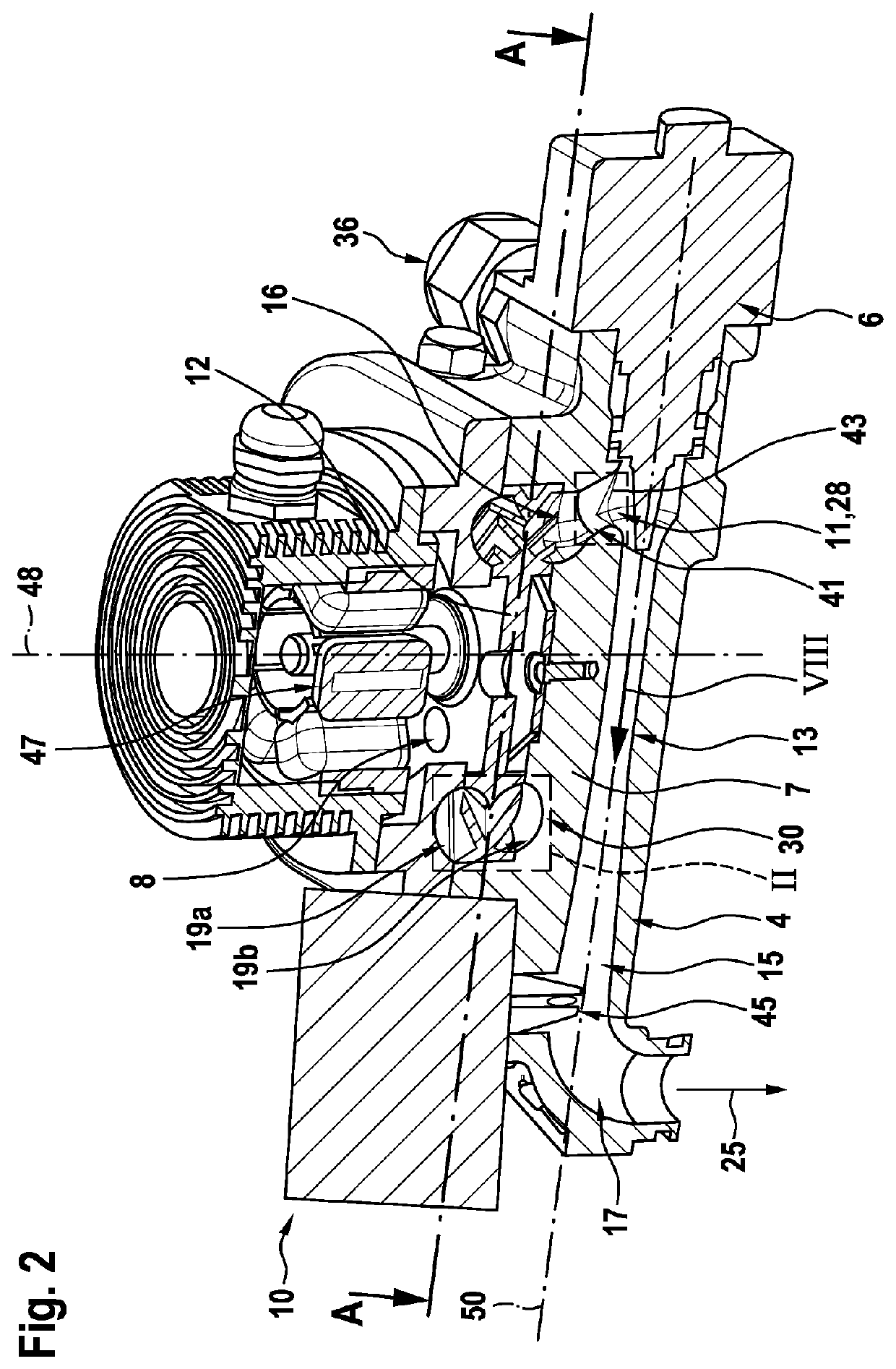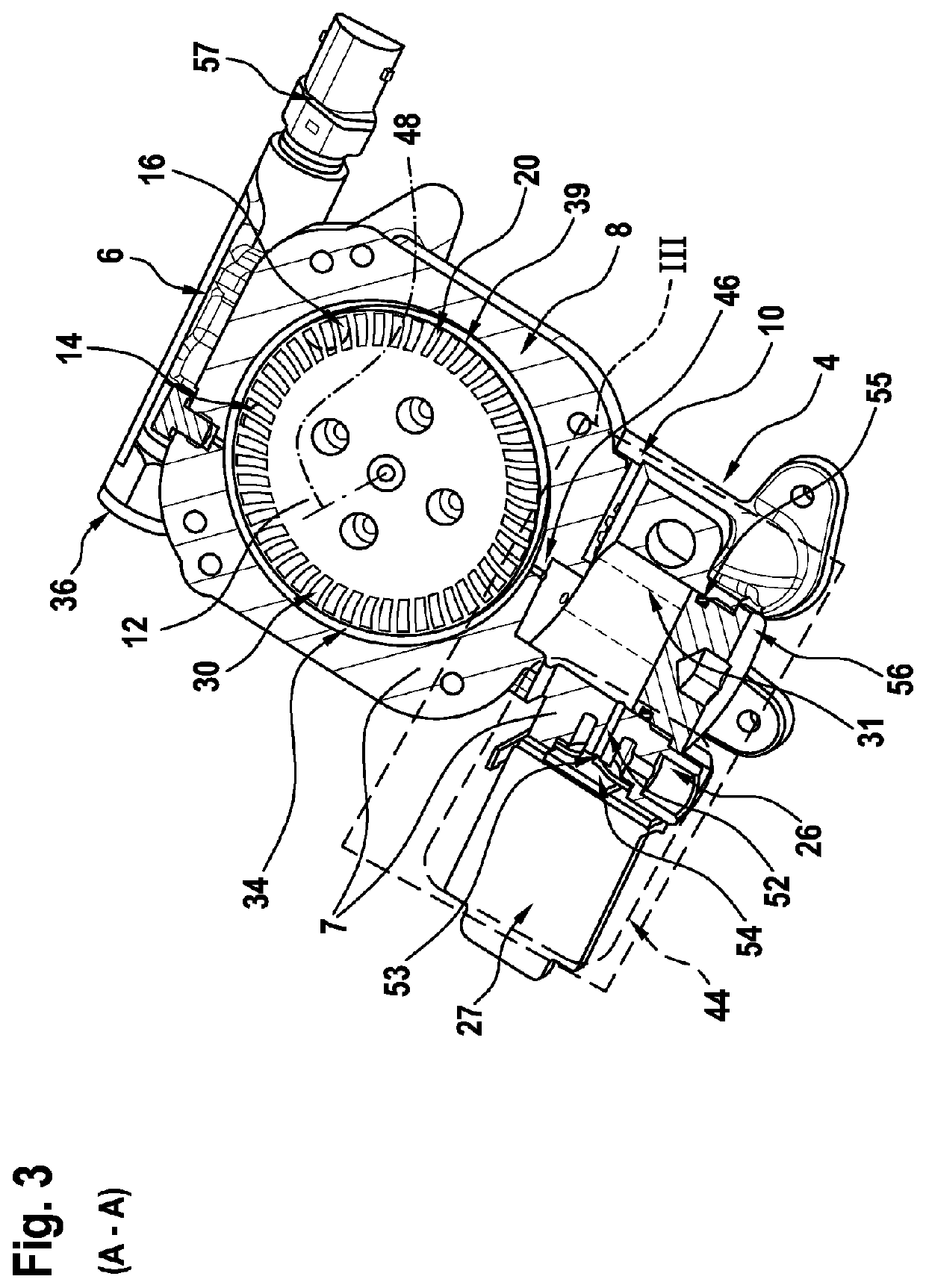Delivery unit for an anode circuit of a fuel cell system for delivering a gaseous medium
a fuel cell and anode circuit technology, applied in the direction of liquid fuel engines, separation processes, electrochemical generators, etc., can solve the problems of large surface area in relation to structural space and/or geometrical volume, large surface area, and large volume of structural space, so as to improve the efficiency of the separator, improve the discharge of heavy constituents, and improve the effect of evacuation
- Summary
- Abstract
- Description
- Claims
- Application Information
AI Technical Summary
Benefits of technology
Problems solved by technology
Method used
Image
Examples
Embodiment Construction
[0032]FIG. 1 is a schematic illustration of a fuel cell system 1 according to the invention with a delivery unit 3.
[0033]Here, it is shown in FIG. 1 that the fuel cell system 1 has a fuel cell 2, wherein the fuel cell 2 has an anode region 38 and a cathode region 40. Here, the anode region 38 of the fuel cell 2 is connected to an anode circuit 9, wherein the anode circuit 9 has the delivery unit 3 and a tank 42.
[0034]Here, the anode region 38 is fluidically connected to the delivery unit 3 by means of a first connecting line 23, wherein the gaseous medium flows in a flow direction V from the anode region 38 to the delivery unit 3. Here, the delivery unit is fed not only with the recirculate flowing from the anode region 38 of the fuel cell 2 but additionally with a motive medium from the tank 42. After flowing through the delivery unit 3, the gaseous medium that is composed of the recirculate and the motive medium flows in a flow direction V via a second connecting line 25 back to t...
PUM
| Property | Measurement | Unit |
|---|---|---|
| pressure | aaaaa | aaaaa |
| pressure | aaaaa | aaaaa |
| axis of rotation | aaaaa | aaaaa |
Abstract
Description
Claims
Application Information
 Login to View More
Login to View More - R&D
- Intellectual Property
- Life Sciences
- Materials
- Tech Scout
- Unparalleled Data Quality
- Higher Quality Content
- 60% Fewer Hallucinations
Browse by: Latest US Patents, China's latest patents, Technical Efficacy Thesaurus, Application Domain, Technology Topic, Popular Technical Reports.
© 2025 PatSnap. All rights reserved.Legal|Privacy policy|Modern Slavery Act Transparency Statement|Sitemap|About US| Contact US: help@patsnap.com



